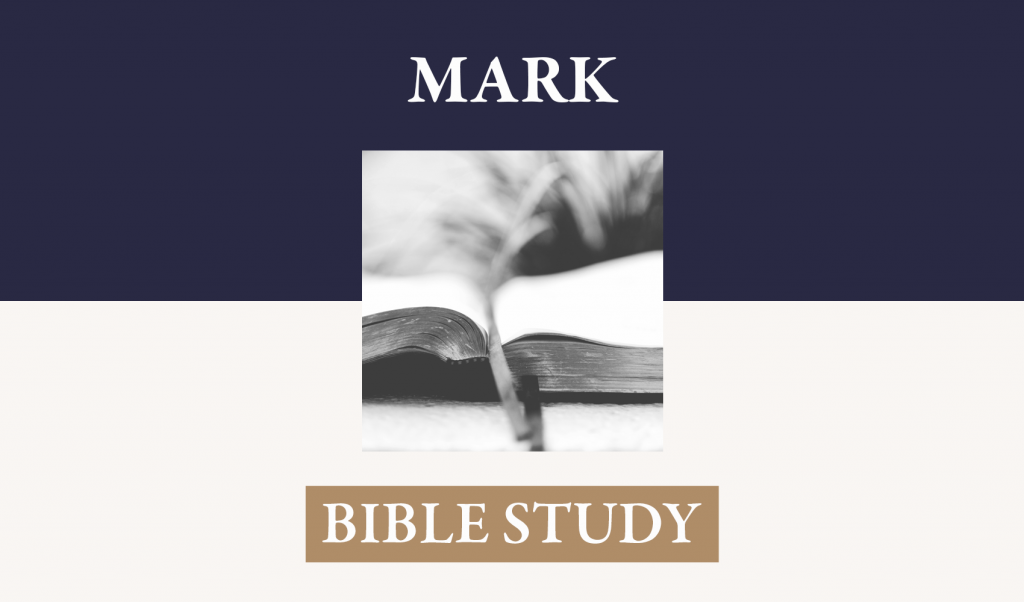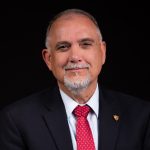Lesson Focus: This lesson will help you to live a victorious and fruitful life of faith.
Fight Fruitlessness: Mark 11:12-14,20-21.
[12] On the following day, when they came from Bethany, he was hungry. [13] And seeing in the distance a fig tree in leaf, he went to see if he could find anything on it. When he came to it, he found nothing but leaves, for it was not the season for figs. [14] And he said to it, "May no one ever eat fruit from you again." And his disciples heard it. [20] As they passed by in the morning, they saw the fig tree withered away to its roots. [21] And Peter remembered and said to him, "Rabbi, look! The fig tree that you cursed has withered." [ESV]
[12-14] The cursing of the fig tree is the only miracle of destruction in the Gospels. The event must be seen as an enacted parable, in which the cursing of the fig tree symbolized the judgment to befall Jerusalem. After the fig harvest from mid-August to mid-October, the branches of fig trees sprout buds that remain undeveloped throughout the winter. These buds swell into small green knops in March-April, followed shortly by the sprouting of leaf buds on the same branches, usually in April. The fig tree thus produces fig knops before it produces leaves. Once a fig tree is in leaf one therefore expects to find branches loaded with figs in various stages of maturation. This is implied in verse 13, where Jesus, seeing a fig tree in full foliage, turns aside in hopes of finding something edible. In the spring of the year the figs are of course not yet ripened into mature summer figs, but they can be eaten, and often are by natives. The tree in verse 13, however, turns out to be deceptive, for it is green in foliage, but when Jesus inspects it he finds no figs; it is a tree with the signs of fruit but with no fruit. The most puzzling part of the brief narrative of the cursing of the fig tree is the end of verse 13: for it was not the season for figs. This phrase is usually understood to exonerate the tree for not producing fruit since it was not yet the season. Understood as such, the phrase makes Jesus’ curse vindictive and irrational. But this is neither the only nor the best way to understand the phrase. It is better simply to distinguish between mature figs and early or unripe figs. The end of verse 13 might be paraphrased, “It was, of course, not the season for mature figs, but it was for unripe figs.” In narrating the episode of Jesus and the fig tree Mark exploits its symbolic import, seeing in the curse of the tree the fate of Jerusalem and the temple. The prophets had often used the fig tree as a symbol of judgment [Isa. 34:4; Jer. 29:17; Hosea 2:12; 9:10; Joel 1:7; Micah 7:1]. In a scathing denunciation of Judah, Jeremiah says: there are no … figs on the fig tree; even the leaves are withered [8:13]. Like the prophets who had on occasion dramatized a particularly trenchant message by action, Jesus dramatizes the end of the temple by an enacted parable. The leafy fig tree, with all its promise of fruit, is as deceptive as the temple, which, despite its religious commerce and activity, is really an outlaws’ hideout [11:17]. The curse of the fig tree is a symbol of God’s judgment of the temple. Mark’s readers, steeped in the Old Testament tradition, would readily have understood Jesus’ cursing of the barren fig-tree as, at the very least, a judgment upon Israel.
[20-21] Mark describes the clearing of the temple in verses 15-19. Thus the story of the fig tree acts as a sandwich around the “meat” of the story; that of the clearing of my house [17]. What Jesus does in the temple goes beyond a purging or corrective act. It attacks the very commerce upon which the temple depended, laying an ax at the root of the temple as an institution. Together with the subsequent events of Holy Week, Mark portrays the clearing of the temple not as its restoration but as its dissolution. Like the fig tree, its function is withered away to its roots. In His sacrificial death on the cross, Jesus alone is the access to God. The fig tree thus symbolizes the temple: as the means of approach to God, the temple is fundamentally replaced by Jesus as the center of Israel.
Fight Worldly Distractions: Mark 11:15-19.
[15] And they came to Jerusalem. And he entered the temple and began to drive out those who sold and those who bought in the temple, and he overturned the tables of the money-changers and the seats of those who sold pigeons. [16] And he would not allow anyone to carry anything through the temple. [17] And he was teaching them and saying to them, "Is it not written, ‘My house shall be called a house of prayer for all the nations’? But you have made it a den of robbers." [18] And the chief priests and the scribes heard it and were seeking a way to destroy him, for they feared him, because all the crowd was astonished at his teaching. [19] And when evening came they went out of the city. [ESV]
[15-16] Mark now turns to the central part of this passage: the clearing of the temple. Jesus enters Jerusalem, but the focus is again on the temple rather than the city itself. Herod’s temple, Israel’s third temple (following the temples of Solomon and Zerubbabel), was still under construction in Jesus’ day, having been begun in 20 B.C. The temple consisted of four divisions and was of immense and grandiose proportions. The first and largest division was the Court of the Gentiles, an open-air quadrangle enclosed by a portico supported by rows of columns. In this area merchants sold sheep and doves for sacrifice and exchanged foreign currency into shekels. The temple precincts were overseen by the Sadducees, and the immense volume of trade and exchange in the Court of the Gentiles was crucial not only for the maintenance of proper worship but also for the financial gain of the Sadducees and Sanhedrin. The other three divisions of the temple – the Court of the Women, the Court of Israel (only for circumcised Jewish males), and the Holy of Holies – belonged within the sanctuary, a freestanding and sublime edifice of 150 yards long by 100 wide that commanded the center of the Court of the Gentiles and faced east. The sanctuary was separated from the Court of the Gentiles by a wall which kept all foreigners out of the sanctuary. Thus the Court of the Gentiles was a virtual stock market of animal dealers and money changers, all of whom were necessary to ensure proper sacrifices and offerings for the many pilgrims, especially at festivals, to the temple. In righteous indignation Jesus drives the animal dealers from the temple and overturns the tables of the money changers. In addition Jesus stops the flow of sacrifices from being carried through the Court of the Gentiles and thus impedes the temple sacrificial system [16].
[17-19] The Messiah was popularly expected to purge Jerusalem and the temple of Gentiles, aliens, and foreigners. Jesus’ action, however, is exactly the reverse. He does not clear the temple of Gentiles, but for them. One of the effects of interrupting the sacrificial system is to enhance the position of Gentiles in the temple, for the Court of the Gentiles was the only place available to non-Jews for worship. The appeal to Scripture (Is it not written) attributes the authority of God’s will to Jesus’ attack on the sacrificial system. The reference to the house of prayer for all nations comes from Isaiah 56:7 which speaks of the extension of God’s salvation to people who formerly were excluded from it. This reveals that Jesus is a very different kind of Messiah than the one epitomized in Jewish expectation. The temple and covenant are not reserved exclusively for Israel but include all nations. In assaulting the money changers and animal sellers and calling the Sanhedrin a club of thieves Jesus attacks not the spiritual corruption of the temple but its commercialism and financial misappropriation. Mark does not say that Jesus pronounces judgment on the Jews. The judgment is against the temple and the religious authorities who superintended it. Mark assures readers that the chief priests and scribes heard the message of the clearing of the temple, just as the disciples had heard about the curse of the fig tree. Both groups, in other words, understood and perceived Jesus’ intent. As a consequence, the Sanhedrin were seeking a way to destroy him, that is, to plot His death. The plot of the Sanhedrin is rooted in fear due to the crowd’s astonishment at Jesus’ teaching.
Fight with Power Through Faith: Mark 11:22-25.
[22] And Jesus answered them, "Have faith in God. [23] Truly, I say to you, whoever says to this mountain, ‘Be taken up and thrown into the sea,’ and does not doubt in his heart, but believes that what he says will come to pass, it will be done for him. [24] Therefore I tell you, whatever you ask in prayer, believe that you have received it, and it will be yours. [25] And whenever you stand praying, forgive, if you have anything against anyone, so that your Father also who is in heaven may forgive you your trespasses." [ESV]
[22-25] Mark concludes the fig tree-temple episode with sayings on faith, the power of prayer, and the necessity of forgiveness. The withered fig tree is an object lesson to the disciples to Have faith in God. The earnestness of the command to believe in God is reinforced by Jesus’ statement: Truly, I say to you. Jesus illustrates the power of faith with Hebraic hyperbole about the moving of a mountain. Mark’s following the fig tree-temple account with a call to faith signifies that Jesus, and not the temple, is the object of faith. Faith is the opposite of doubting in one’s heart. Faith is also the opposite of fear. It is a choice to trust in Jesus despite everything to the contrary, and to expect from Him what cannot be expected from anything else in the world. There is thus an inevitable connection between faith and prayer, with which Mark ends this section [24-25]. Verse 24 resembles several statements in the Gospel of John [14:13-14; 15:7,16; 16:23] and attests that true prayer is making requests of God in faith. Faith is more certain of God’s steadfastness than of human inabilities and vicissitudes. The expression in verse 24 reflects Semitic thought in which the certainty of a future act, based on the trustworthiness of God, can be referred to in the past tense. Both faith and prayer stand in continuity with God’s character and in conformity with His will. The final instruction in verse 25 is about forgiveness of sins, which is the feature of faith that most perfectly epitomizes God’s nature. The reference to standing in prayer reflects the customary prayer posture in Judaism. Verse 25 is an unmistakable echo of the forgiveness petition in the Lord’s Prayer, and its interpretation immediately following.
Questions for Discussion:
1. How are we to understand the meaning of the cursing of the fig tree? How do these verses about the fig tree connect with verses 15-19 concerning the cleansing of the temple?
2. Why did Jesus become so angry at the animal dealers and money changers? What important truth do we find here for God’s acceptance of Gentile worshippers?
3. According to Jesus, what is the relationship between faith, the power of prayer and the necessity of forgiveness? How do these verses define faith?
References:
The Gospel According to Mark, James Edwards, Eerdmans.
The Gospel According to Mark, William Lane, Eerdmans.




















